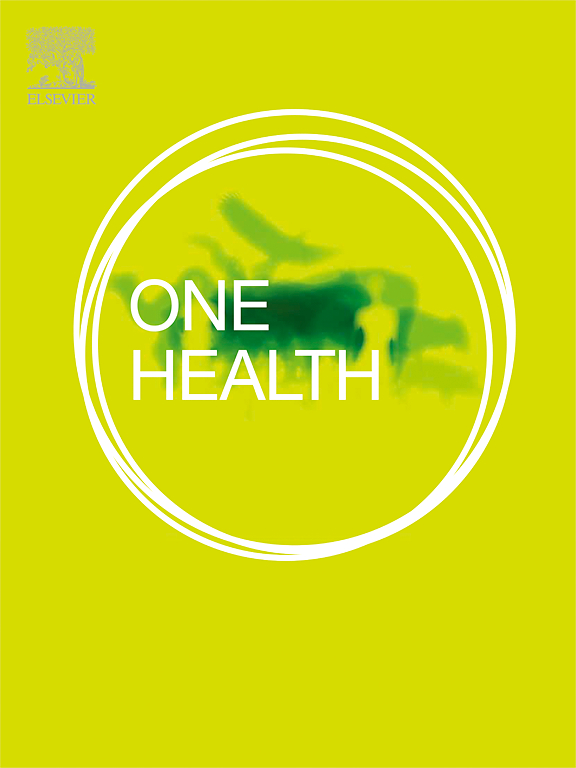中国人畜共患病控制能力建设:从单一卫生视角评估需求和差距
IF 4.5
2区 医学
Q1 INFECTIOUS DISEASES
引用次数: 0
摘要
传统的针对特定部门的方法不足以有效解决人-动物-环境界面的人畜共患病控制问题,而“同一个健康”方法促进多部门合作和综合解决方案。要应用这一方法,提高能力是必不可少的,但对中国在“同一个健康”框架下的能力建设了解不足,阻碍了所需劳动力的有针对性发展。目的评估中国人畜共患病控制能力建设的差距和需求。方法于2023年12月至2024年4月,在中国两个省份进行实地调查,有目的地抽取来自不同行政部门的参与者。进行了半结构化访谈(40-60分钟),并制定了“一个健康能力建设框架”,以指导设计和分析。访谈录音通过反复的主题分析进行转录和分析。通过每周的共识会议制定了统一的代码本,并在专家监督下确定了更高级别的主题。最后的主题被映射到框架上,并使用热图进行可视化,以确定最突出的差距和需求。结果共有77人参与,涉及人类卫生(44.2%)、动物卫生(18.2%)、环境管理(20.8%)和多学科协调(16.8%)等领域。中国的“同一个健康”能力建设面临三大挑战:(i)结构碎片化,责任分散,跨部门治理机制不足;资源差距显示乡镇一级严重短缺和关键项目持续存在资金缺口;(三)知识不足,包括对新出现的病原体的研究不足和缺乏实际合作组成部分的培训计划。关键需求集中在加强基层基础设施、维持“同一个健康”培训项目和提高解决问题的能力。结论明确了中国人畜共患病预防能力建设的现状和需求。研究结果将为优化中国人畜共患疾病的预防和控制提供循证建议,并通过加强“同一个健康”的实施促进全球卫生安全。本文章由计算机程序翻译,如有差异,请以英文原文为准。
Capacity building for zoonosis control in China: Assessing needs and gaps by the one health lens
Background
Traditional sector-specific approaches are inadequate to effectively address zoonosis control at the human-animal-environment interface, whereas the One Health approach promotes multisectoral collaboration and integrated solutions. To apply this approach, competence enhancement is essential, yet there is insufficient understanding of China's capacity-building under the One Health framework, hindering targeted development of the workforce needed.
Objective
To assess the gaps and needs of capacity building for zoonosis control in China.
Methods
From December 2023 to April 2024, field investigations were conducted in two Chinese provinces with purposively sampled participants from various administrative sectors. Semi-structured interviews (40–60 minutes) were conducted, with a One Health Capacity Building Framework developed to guide both the design and analysis. Interview recordings were transcribed and analyzed through iterative thematic analysis. A unified codebook was developed through weekly consensus meetings, and higher-order themes were identified under expert supervision. The final themes were mapped onto the framework and visualized using a heatmap to identify the most prominent gaps and needs.
Results
In total, 77 participants were engaged, spanning the human health (44.2 %), animal health (18.2 %), environmental management (20.8 %) and multidisciplinary coordination (16.8 %) sectors. China's One Health capacity building revealed three challenges: (i) Structural fragmentation with divided responsibilities and inadequate cross-sectoral governance mechanisms; (ii) Resource disparities showing severe township-level shortages and persistent funding gaps for critical projects; and (iii) Knowledge deficits including insufficient research on emerging pathogens and training programs lacking practical collaboration components. Critical needs focused on strengthening the grass-root infrastructure, sustaining One Health training programs, and enhancing problem-solving capabilities.
Conclusion
The current status and needs in capacity building for zoonosis prevention in China were identified. The results would provide evidence-based recommendations to optimize prevention and control of China's zoonotic disease and advance global health security through strengthened One Health implementation.
求助全文
通过发布文献求助,成功后即可免费获取论文全文。
去求助
来源期刊

One Health
Medicine-Infectious Diseases
CiteScore
8.10
自引率
4.00%
发文量
95
审稿时长
18 weeks
期刊介绍:
One Health - a Gold Open Access journal.
The mission of One Health is to provide a platform for rapid communication of high quality scientific knowledge on inter- and intra-species pathogen transmission, bringing together leading experts in virology, bacteriology, parasitology, mycology, vectors and vector-borne diseases, tropical health, veterinary sciences, pathology, immunology, food safety, mathematical modelling, epidemiology, public health research and emergency preparedness. As a Gold Open Access journal, a fee is payable on acceptance of the paper. Please see the Guide for Authors for more information.
Submissions to the following categories are welcome:
Virology,
Bacteriology,
Parasitology,
Mycology,
Vectors and vector-borne diseases,
Co-infections and co-morbidities,
Disease spatial surveillance,
Modelling,
Tropical Health,
Discovery,
Ecosystem Health,
Public Health.
 求助内容:
求助内容: 应助结果提醒方式:
应助结果提醒方式:


